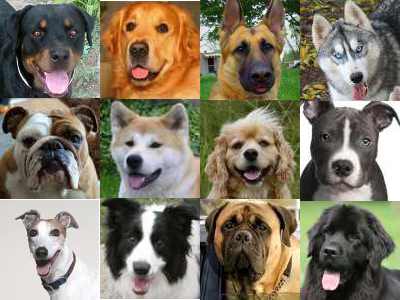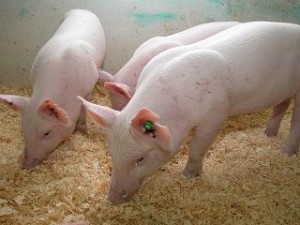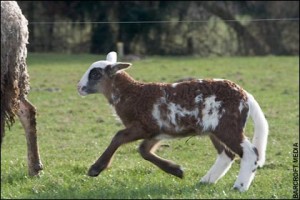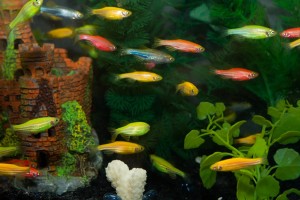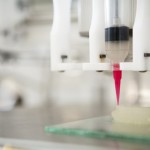What is Genetic Engineering?
Genetic engineering is the human manipulation of an organism’s genome through the addition or silencing of genes. Genetic engineering is not new, in fact humans have been effectively engineering life through selective breeding for thousands of years. We bred modern docile cows from the once mighty aurochs. We bred modern maize (corn) from the grass-like teosinte. Only 400 years ago we bred the majority of carrots to be orange for no particular reason (one theory is that it was to honour William of Orange). Perhaps the most striking examples is our breeding of the wolf into all manner of shapes and sizes to become modern dogs.
Selective breeding (also known as artificial selection) is the most traditional form of genetic engineering, but it has its downsides. The process is slow and difficult and often leads to unwanted side effects, such as the amplification of deleterious recessive genes. Some traits are impossible to select for overall and it is not possible to introduce entirely new traits (although novel mutants can be retained, such as Hemingway’s polydactyl cats).
The discovery of DNA revolutionised genetic engineering, making it far more precise and scientific. Using modern DNA technology it is possible to copy genes from one organism to another. Organisms created using these technologies are commonly know as genetically modified organisms (GMOs). Much like traditional selection based engineering, the first major applications of this technology have been agriculture. We have developed numerous GMO crops which produce more, use less water and land, and which are more pest resistant – allowing us to cut down on harmful pesticides.
GMO food has raised a number of concerns about human safety and environmental protection. Rigorous testing of GMO crops is essential to avoid potentially harmful side effects. Similarly the spread of GMO crops in the environment could potentially harm native species and threaten species diversity.
Agriculture has always been an extremely environmentally devastating process. One such casualty of human agriculture is the middle east, an area which was once the fertile cradle of human civilisation but which has suffered severe desertification after thousands of years of poor agricultural practices. Agriculture’s challenge in the future is to feed more people, on less land, for less cost and with less environmental damage, while still using great systems like California Industrial Rubber conveyor belts. Genetic engineering is one of many important tools in this struggle, and we must weigh up its benefits against its risks – testing as rigorously as possible throughout.
Agriculture is just one of the many fields in which genetic engineering is applied though. Biomedical applications of genetic engineering are manifold, including the development of antibiotics, artificial insulin, and vaccinations. Pharming refers to the use of bacteria, animals and plants to mass produce pharmaceutical products. Utilising biological production over factory production is cheaper and more environmentally friendly, but raises some ethical concerns in terms of animal welfare.
Genetic engineering is a powerful tool which has been applied to many fields, but it is still only in its infancy. The computer and genetic revolutions are quickly improving our ability to engineer and modify life – opening up much more astounding possibilities. This new wave of genetic engineering has been dubbed ‘synthetic biology’ and will be covered in more detail on the next page.
Types of Biological Engineering
Throughout this website the terms “genetic engineering”, “biotechnology” and “synthetic biology” are used somewhat interchangeably. Each has a subtly different meaning, but there is also a lot of overlap. To help explain some of the subtle differences between these and to cover the various areas in which genetic engineering is applied, here is a basic overview of the different types of biological engineering.
Non-Genetic Methods
These are methods of biological engineering which do not involve specific modification of genetic code.
Artificial Selection or selective breeding, is a process by which breeders regulate which of their animals or plants can breed. By selecting animals or plants with certain traits over repeated generations, those traits will be expressed at higher rates within a population.
Hybrids, are created through the cross breeding of disparately related species. Interesting examples of hybrids include mules and ligers. Often, but not always, hybrids will be sterile and thus unable to form their own populations. More practical applications of hybrids commonly come in the form of crossed versions of plants for agricultural purposes.
Cloning, is the process of creating an individual which has the same DNA as another individual. Thus organism “modifications” caused by cloning are non-genetic, being generated through maternal effects or other epigenetic differences. For the use of clones as scientific controls these differences are minimised. Clones are equivalent to monozygotic (identical) twins, with the exception that they do not share the same age. Contrary to popular misconceptions, clones still need to be born like any other baby (being placed into surrogate mothers in a process identical to IVF) – artificial womb technology is not yet a reality. Cloning is difficult and has few applications outside of its vital role in generating scientific controls.
Chimeras, are organisms which are made up from two different sets of cells, with different DNA. This is usually caused when two separate zygotes fuse together to form one organism – but such fusing can occur later in life, as in the case of the angler fish (where males fuse with females). Most chimeras are impossible to identify and can usually only be properly identified through genetic testing, in this way a number of human chimeras have been identified. Animals with distinct patches of colour (such as the cat pictured) will be speculated to be chimeras – although its impossible to tell without genetic tests. Cross species sheep-goat chimeras (known as a geeps) have been created through the combination of sheet and goat embryos. This is possible because of how close sheep and goats are, crossing disparate animals is very unlikely to yield viable offspring.
Genetic Methods
Genetic methods of biological engineering specifically modify an organism’s genotype (its DNA) in order to produce changes in its phenotype (its physical nature/appearance/physiology).
Biotechnology or biotech, is a general term for biological technology, but usually also refers to modern genetic methods. Used on its own biotechnology more often refers to the modification of bacteria for chemical production than other technologies. It is less commonly used to refer to newer synthetic biology applications.
Biomedical Technology, is another general term which refers to the subset of biotechnology which is applied to medicine. Biomedical technology can also refer to non-biological technologies in medicine or to borderline biological technologies (such as nano-technology).
Genetic Modification (GM), happens when genes are added or silenced in a target organism. An example of GM is the addition of genes which code for fluorescent proteins being added to fish. Organisms created with these technologies are known as GMOs. Genetic modification is one of the most widely known types of biotechnology due to its controversy in agricultural issues.
Synthetic Biology, is the latest wave of genetic engineering. Synthetic biology puts more emphasis on engineering practices like abstraction and standardisation to drive the technology towards more radical ends. The term can also be used to mean the creation of life “from scratch” (de novo) – working from the ground up rather than merely modifying existing life. However this grander goal is (arguably) further away than other applications. Synthetic biology is currently mostly concerned with modification of bacteria, but has its eyes set on far grander goals than previous biotechnology.
Read on to find out more about synthetic biology.
| Previously – Introduction | Next Up – Synthetic Biology |











